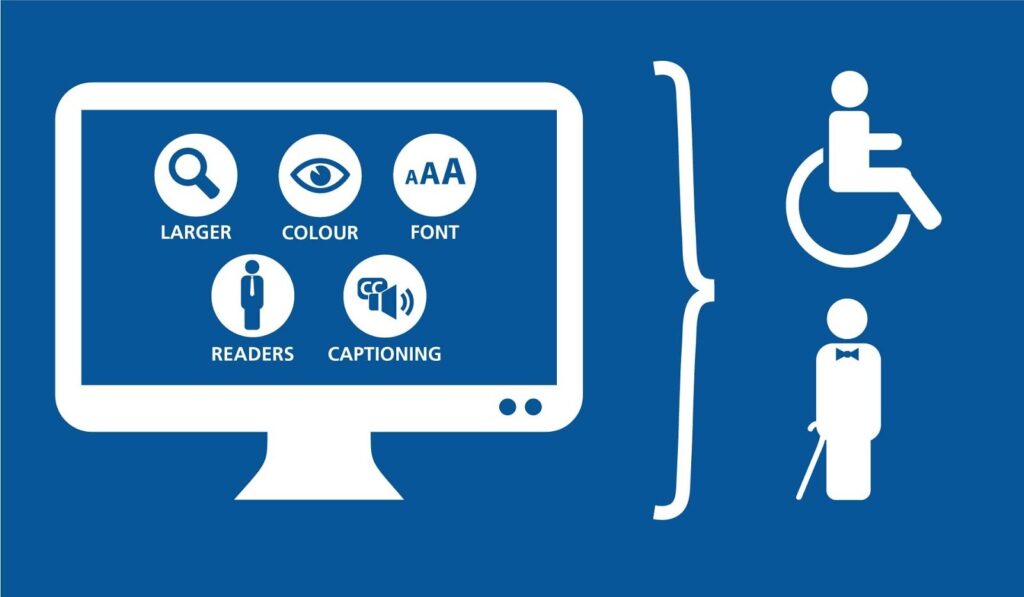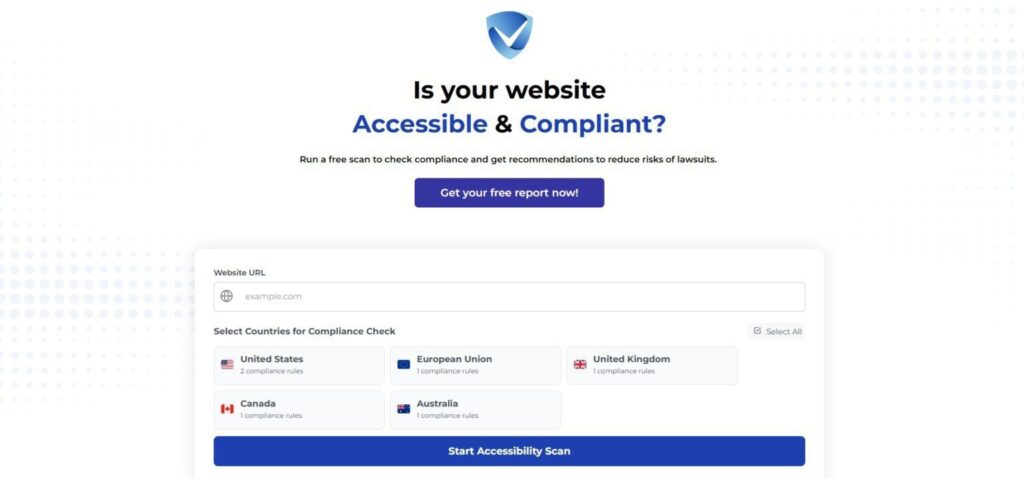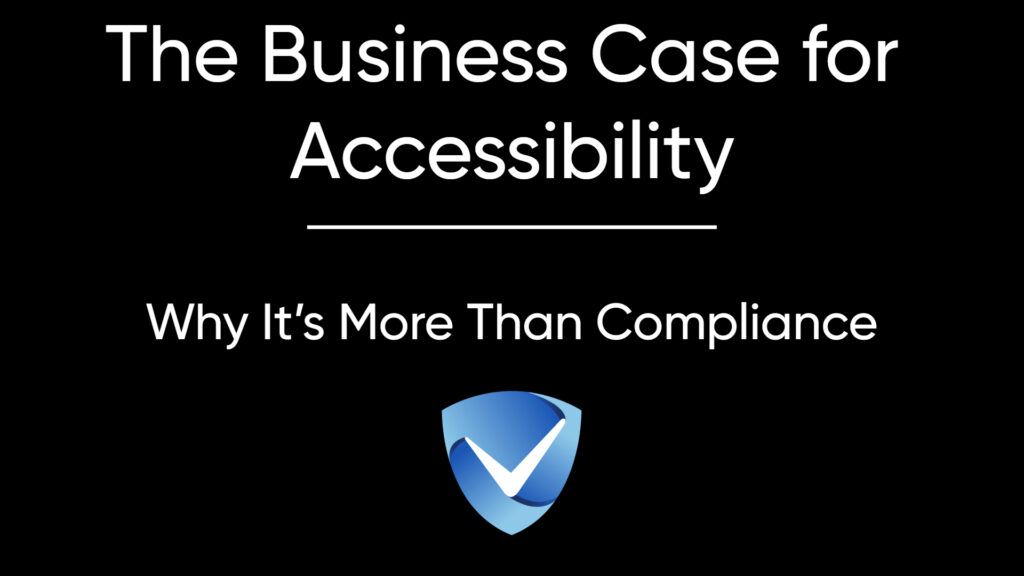What Is Web Accessibility?
Web accessibility is increasingly recognized as a fundamental component of digital presence that extends far beyond mere compliance with legal frameworks such as the Americans with Disabilities Act (ADA) or the Web Content Accessibility Guidelines (WCAG). While it is true that many organizations initially engage with accessibility to meet legal requirements, this perception often overlooks the broader implications and advantages that come with creating inclusive digital environments.
The notion that accessibility is solely about adhering to regulations fails to capture its multifaceted nature. When businesses prioritize accessibility, they are not just avoiding potential legal pitfalls; they are potentially unlocking new markets. By making websites and digital content accessible, organizations can reach a diverse audience, including individuals with disabilities who could otherwise encounter barriers. This market segment is significant, and by accommodating their needs, companies can drive engagement and increase their customer base.
Furthermore, accessibility fosters enhanced customer loyalty. Consumers increasingly prefer brands that demonstrate social responsibility and inclusivity. An accessible website not only caters to a wider audience but also reflects a brand’s commitment to equality and customer-centric service. Consequently, nurturing this sense of belonging translates into greater consumer trust and improved brand reputation.
This blog post will explore the concept of web accessibility in further detail, discussing its benefits beyond compliance, providing insights into how companies can implement effective accessibility strategies, and examining real-world case studies that highlight these principles in action. Ultimately, adopting an accessibility-first approach is not merely a legal obligation; it is a business strategy that brings long-lasting advantages.

The ROI of Accessible Websites
Investing in accessible websites offers a significant return on investment (ROI) that transcends mere compliance with legal requirements. The disability market is vast, comprising over 1 billion individuals globally, each representing a substantial segment of potential consumers. Collectively, this group possesses an estimated spending power of approximately $8 trillion, a figure that underscores the economic advantage of accessibility within digital platforms. By catering to this demographic, businesses can tap into a lucrative market that is often overlooked.
Prioritizing accessible web design not only serves individuals with disabilities but also enhances the overall user experience for a broader audience, including older adults and those facing temporary hardships, such as injuries or adverse working conditions. This inclusive design approach reflects a commitment to diversity, which can cultivate brand loyalty and encourage repeat business. Consumers today are more inclined to support brands that demonstrate social responsibility, and accessibility is a vital aspect of this ethos.
Moreover, accessible websites often lead to improved search engine optimization (SEO). Search engines favor user-friendly sites, resulting in increased visibility and organic traffic. Enhanced usability means that an inclusive design can lower bounce rates and boost overall engagement, as users from various backgrounds find it easier to navigate the site. These factors combine to not only capture more users but also drive conversions by providing a seamless and fulfilling user journey.
In essence, investing in accessible websites extends beyond ethical considerations; it is a strategic business decision that taps into a wide consumer base. Companies that fail to recognize the benefits of accessibly designed digital spaces risk alienating a significant portion of potential customers, thus neglecting a major opportunity for growth and competitiveness in the market.
Improved SEO Performance Through Better User Experience
Accessibility in web design not only meets legal and ethical standards but also offers significant advantages for search engine optimization (SEO). By integrating accessibility best practices, businesses can enhance their SEO strategies effectively. A key element lies in the use of semantic HTML, which provides context to web documents and enables search engines to understand content better. This structure allows crawlers to index websites more efficiently, leading to improved visibility in search results.
Moreover, optimizing images with descriptive alt text not only enhances accessibility for visually impaired users but also contributes to SEO performance. Search engines rely on this text to understand the content of images, improving the chances of those images appearing in relevant searches. By ensuring that every image includes alt text, websites enhance both user experience and their likelihood of ranking higher in search engine results pages (SERPs).
Incorporating video captions is another critical aspect of accessible design that positively influences SEO. Captions enhance comprehension for a broader audience while also providing search engines with additional text information to index. This practice can lead to improved ranking for video content and better user engagement, as users are more likely to watch videos that are easily understood even without sound.
Accessible websites tend to experience lower bounce rates as users are more engaged and can navigate the site intuitively. When users find what they are looking for quickly, it fosters a positive experience that boosts retention and encourages conversions. Consequently, businesses benefit not just through enhanced SEO but also by cultivating customer loyalty and increasing overall satisfaction. A commitment to web accessibility thus translates into a more user-friendly environment that aligns seamlessly with effective SEO practices, creating a win-win situation for all stakeholders.

Legal Risk Mitigation Through Proactive Compliance
Ensuring compliance with accessibility standards such as the Web Content Accessibility Guidelines (WCAG) and the Americans with Disabilities Act (ADA) is critical for organizations aiming to mitigate legal risk. The increasing prevalence of ADA-related lawsuits has transformed accessibility from a mere compliance obligation into a pressing business priority. According to recent statistics, the number of lawsuits filed under the ADA has significantly risen, leading many businesses to reassess their accessibility policies and practices.
Neglecting to address accessibility requirements can result in substantial legal repercussions, including costly settlements and defensive litigation. Businesses that proactively implement accessible design principles can avoid the financial burdens associated with reactive measures taken after a non-compliance issue arises. Proactive compliance not only serves as a defensive strategy but it also enhances overall business reputation and consumer trust. When companies prioritize accessibility, they display a commitment to inclusivity, thereby attracting a wider audience and consumer base.
Moreover, it is essential to recognize that accessibility regulations are not limited to the United States; various global markets are also establishing frameworks that require businesses to adhere to accessibility standards. Failing to comply with these regulations can expose companies to international legal risks as well. Therefore, understanding the legal landscape and committing to a proactive approach to accessibility are crucial for organizations wishing to minimize potential liabilities.
In essence, adopting an inclusive design strategy goes beyond adhering to legal mandates. It positions organizations favorably in the marketplace and fosters an environment that advocates for diversity and equitable access. By integrating accessibility into the core business strategy, organizations can not only mitigate their legal risks but also enhance their long-term viability and success.
Building a Positive Brand Reputation Through Inclusivity
In today’s competitive marketplace, establishing a positive brand reputation is crucial for long-term success. Companies that prioritize accessibility not only meet legal requirements but also foster inclusivity, which enhances their overall brand image. A study by the Return on Disability Group found that accessible brands gain a competitive advantage, appealing to a broader audience while reflecting social responsibility.
One prominent example is Tesco, a multinational grocery and general merchandise retailer. By implementing accessible designs in their online shopping platform, Tesco significantly improved user experience for customers with disabilities. The company not only reported increased traffic to their website but also saw a notable rise in customer loyalty and satisfaction. Tesco’s commitment to accessibility positioned it as a leader in inclusivity, reinforcing a positive brand reputation that resonates with socially conscious consumers.
Similarly, Logitech, a global provider of personal computer and mobile accessories, demonstrated how accessibility can drive innovation. By creating products that cater to diverse user needs, Logitech expanded its market reach. Their initiatives in accessible product design have not only improved the functionality of their offerings but have also led to significant revenue growth. By prioritizing inclusivity, Logitech has successfully differentiated itself in a saturated market, enhancing its brand perception among consumers and industry peers alike.
Investing in web accessibility and inclusive design is, therefore, not merely an ethical imperative but a strategic business decision. As demonstrated by companies like Tesco and Logitech, adopting accessible practices fosters a more engaged customer base, boosts revenue, and inspires innovation. These benefits contribute to building a brand reputation that emphasizes inclusivity, which is increasingly important to consumers in the modern landscape.
Boosting Customer Loyalty and Trust
In today’s marketplace, a significant shift towards inclusivity and social responsibility is affecting consumer purchasing decisions. Businesses that prioritize accessibility in their online presence are finding a powerful avenue to connect with customers on a deeper level. Accessible websites do not only meet legal compliance; they also foster an environment that values and respects all users, which in turn enhances customer loyalty and trust.
When customers encounter a website that is easy to navigate and use, regardless of their abilities, they are more likely to develop a positive association with that brand. Accessibility promotes a sense of belonging, making users feel valued and understood. As they engage more frequently with an inclusive brand, they become loyal advocates. This loyalty is rooted in the understanding that the business cares about diverse needs, contributing to stronger emotional ties with the brand.
Moreover, word-of-mouth marketing plays a crucial role in this equation. Satisfied customers who experience a seamless and inclusive digital interaction are more inclined to share their positive experiences with friends and family. These testimonials can significantly influence potential consumers, who may choose to support brands that demonstrate a commitment to accessibility and inclusivity. When accessibility is a priority, businesses foster not only satisfaction but also advocacy, leading to organic growth in customer retention and repeat business.
Furthermore, as consumers increasingly seek brands that align with their values, an accessible approach resonates with this audience. Brands that embrace inclusivity are often perceived as more trustworthy, enhancing their reputation in the marketplace. Accessibility, therefore, becomes an integral aspect of a company’s identity, contributing to a solid foundation of customer loyalty and trust, which are essential for long-term success.

Innovation Through Inclusive Design
Inclusive design is a methodology that seeks to create products and services accessible to the widest possible audience. This approach not only fulfills the requirements of compliance but also serves as a catalyst for innovation. Companies that prioritize inclusive design often discover that by addressing diverse user needs, they cultivate an environment ripe for creative solutions. For instance, voice control features, initially developed for individuals with mobility impairments, have gained widespread adoption across various demographics. Such technologies have transformed how users interact with devices, simplifying tasks for everyone and enhancing user experience.
Moreover, high-contrast settings, which are particularly beneficial for users with visual impairments, have seen extensive utilization. These features allow individuals with different visual capabilities to engage more effectively with content. By focusing on a broader spectrum of accessibility needs, organizations can drive innovation that does not merely cater to a specific group but instead enriches the experience for all users, thus enhancing overall usability.
This paradigm shift in product development represents a strategic advantage. Companies leveraging inclusive design often discover untapped markets and demographic segments, thereby extending their reach. The adoption of solutions like adaptable user interfaces that allow customization according to individual preferences exemplifies how innovative designs can translate into greater market engagement. Furthermore, collecting feedback from diverse user groups promotes a continuous improvement cycle, leading to refined products that reflect the voices of a wider audience.
In essence, embracing inclusive design as a core aspect of innovation strategies can set organizations apart from competitors by fostering a culture of creativity and responsiveness. This not only enhances user satisfaction across various demographics but also positions companies at the forefront of industry advancements in accessibility, showcasing that the pursuit of inclusivity is, in fact, a drive toward excellence.
Actionable Insights for Businesses
To effectively enhance accessibility within a business framework, a multifaceted approach is essential. First and foremost, organizations should conduct a thorough accessibility audit of their existing products, services, and digital assets. This audit will help identify barriers that hinder access for individuals with disabilities. Utilizing tools such as automated accessibility checkers in tandem with manual testing by users with disabilities can yield comprehensive insights and highlight areas for improvement.
Once the audit is complete, businesses should prioritize creating an inclusive culture that values accessibility at every level. This begins with training employees and stakeholders on the importance of accessibility, fostering an environment where accessibility is viewed as a shared responsibility. Incorporating accessibility training into onboarding processes and continuous professional development ensures that all staff are knowledgeable about inclusive design principles.
Furthermore, companies should invest in user-centered design practices. Actively involving individuals with disabilities during the design and testing phases not only serves compliance needs but aligns products and services with real user expectations, enhancing overall usability. This strategic shift can lead to innovation, as diverse perspectives provide insights that traditional designs might overlook.
Another crucial step is establishing clear accessibility policies and frameworks that drive accountability. By setting measurable goals and timelines, businesses can track their progress and demonstrate commitment to accessibility. Publicly sharing accessibility efforts and outcomes can also build trust with consumers who increasingly prioritize corporate social responsibility in their purchasing decisions.
Lastly, accessibility should not be viewed as a one-time project. It is vital for businesses to stay current with accessibility standards and evolve their practices over time. Engaging with the latest developments in accessible technology and design will ensure that organizations maintain a competitive edge while contributing to positive societal change.
Try Our Free Website Accessibility Scanner

In harnessing the transformative power of accessibility, businesses can uncover a multitude of advantages that go beyond mere compliance with legal mandates. The initial argument revolves around the concept that accessibility is not just an ethical obligation, but a strategic initiative that can significantly enhance user experience and broaden consumer reach. By implementing accessible design principles, organizations can tap into a vast market of individuals with disabilities, ultimately leading to an increase in customer loyalty and engagement.
Moreover, the integration of accessibility into business strategies fosters innovation. Companies that prioritize inclusivity often experience enhanced problem-solving capabilities as diverse perspectives come into play. This diversity can drive creative solutions, resulting in products and services that cater to a wider audience, thus propelling market growth. Accessibility, therefore, becomes a catalyst for not only meeting legal criteria but also for fostering an environment of innovation and creativity.
In addition to the ethical and innovative benefits, investing in accessibility shows considerable return on investment (ROI). Studies have illustrated that accessible websites often rank higher in search engine results, translating to increased visibility and traffic. Furthermore, the reduction of legal risks associated with non-compliance can lead to significant cost savings. The implementation of accessible practices translates into an improved reputation, further enhancing customer acquisition and retention rates. Therefore, for businesses, the question is not whether to invest in accessibility, but rather how quickly this investment can be made a priority.
In conclusion, prioritizing accessibility is not merely an optional addition to a company’s strategy; it is a fundamental component that drives long-term success and competitiveness in an increasingly digital world. Embracing this approach empowers organizations to create a more inclusive environment, yielding measurable benefits while fulfilling a commitment to social responsibility. Investing in accessibility is, indeed, a smart business decision in today’s market landscape.



